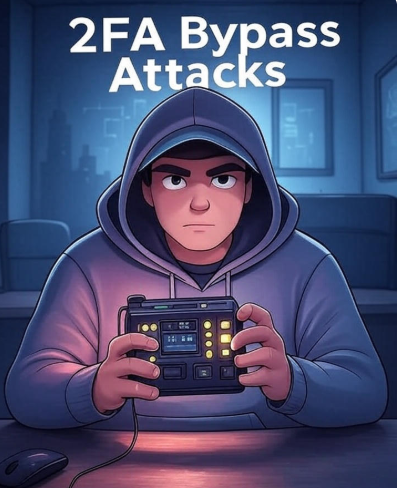Hey everyone, welcome back to my tech blog where I dive deep into the gadgets, apps, and innovations that keep our digital world spinning. Today, I’m super excited to talk about something that’s got the gaming community buzzing, the Pokémon GO August Community Day featuring Rookidee. If you’re like me, you’ve probably spent countless hours wandering parks and streets, phone in hand, chasing those elusive critters. But this event isn’t just another catch-fest; it’s a prime example of how augmented reality (AR) tech is evolving to create immersive, community-driven experiences. I’ll break it all down, from the event details to the behind-the-scenes technology that makes it possible, and why it’s a game-changer for mobile gaming in 2025.
First off, let’s set the scene. The official announcement from Pokémon.com dropped this bombshell: “Galar-unteed Fun when Rookidee Takes Over Pokémon GO August Community Day.” Yeah, that’s a clever pun tying into the Galar region from Pokémon Sword and Shield, where Rookidee hails from. The event kicked off on August 30, 2025, running from 2:00 p.m. to 5:00 p.m. local time. But don’t worry if you missed the main window – some bonuses lingered until September 6 at 10:00 p.m. local time. As someone who’s been glued to my screen for these events since Pokémon GO launched back in 2016, I can tell you this one felt fresh and full of energy, especially with Rookidee’s debut as the star.
Rookidee, for those who might not be deep into the Pokémon lore, is this tiny, plucky bird Pokémon that’s all about determination and growth. It evolves into Corvisquire and then into the mighty Corviknight, a steel-flying type that’s a beast in battles. During the event, Rookidee popped up everywhere in the wild, making it easier than ever to stock up on candies and hunt for that shiny variant. Shinies are always the holy grail, right? The shiny Rookidee has this cool blue plumage instead of the usual black, and the odds were bumped up, so trainers worldwide were out in force.
Now, let’s geek out on the tech side because that’s what this blog is all about. Pokémon GO, developed by Niantic, is built on a foundation of AR technology that overlays digital elements onto the real world via your phone’s camera and GPS. For Community Days like this, Niantic cranks up the spawn rates using their server-side algorithms. It’s not just random; they use geolocation data to ensure Pokémon appear in high-traffic areas without overwhelming the servers. Think about it – millions of players logging in simultaneously, and the app handles it smoothly most of the time. That’s thanks to cloud computing from partners like Google Cloud, which scales resources dynamically. During the Rookidee event, I noticed how seamlessly the increased spawns integrated with my daily walk. No lag, no crashes – a far cry from the early days when servers would melt under the pressure.
One of the standout features was the evolution bonus. If you evolved your Corvisquire into Corviknight during the event window (or up to that September 6 cutoff), it learned the special Charged Attack called Air Cutter. This move isn’t just fluff; it’s a flying-type attack with solid damage output, making your Corviknight a viable option in PvP battles or raids. From a tech perspective, this ties into Pokémon GO’s battle system, which uses real-time calculations for damage, energy, and shields. The game engine, based on Unity, handles these mechanics with precision, factoring in IVs (Individual Values), weather boosts, and more. Weather boosts were in play here too – if it was windy during your local event, Rookidee got a power-up, encouraging players to engage with real-world conditions. That’s AR at its best: blending virtual Pokémon with actual environmental data pulled from services like AccuWeather.
Bonuses galore made this Community Day a trainer’s dream. Eggs hatched at 1/4 the usual distance if placed in Incubators during the event – perfect for those rare 10km eggs. Double candy for catches meant you could power up your team faster, and for high-level players (level 31+), there was a doubled chance for Candy XL, which is crucial for maxing out Pokémon to level 50. Lure Modules lasted three hours instead of the standard 30 minutes, turning PokéStops into hotspots. And trading got a boost: one extra Special Trade per day (up to three total) and 50% less Stardust cost from 2:00 p.m. to 10:00 p.m. These aren’t just perks; they’re engineered to boost player engagement. Niantic’s data analytics team likely pores over metrics like active users, retention rates, and in-app purchases to refine these. For instance, the extended trade window uses the app’s social features, which rely on Bluetooth and Wi-Fi for nearby connections, fostering real-life meetups.
Speaking of social tech, Community Days are all about bringing people together, and this one nailed it. I joined a local group chat on Discord, Discord’s integration with gaming apps is underrated tech and we coordinated raids and trades. The event included Field Research tasks themed around catching Rookidee, rewarding Stardust, Great Balls, and other goodies. These tasks pop up when you spin PokéStops, which are mapped to real-world landmarks via Niantic’s Wayfarer system. Players submit and review points of interest, crowdsourcing the game’s map. It’s a brilliant use of user-generated content, powered by machine learning to verify submissions and prevent spam.
For those willing to spend a bit, there was a Special Research story available for about $1.99. This paid content gave encounters with Rookidee featuring a special background, plus items like a Premium Battle Pass and Rare Candy XL. The special background is a neat AR touch, it’s like a custom photo filter in the encounter screen, using your phone’s graphics processor to render high-res visuals. And free Timed Research offered similar rewards, including that shiny-boosted Rookidee encounter, as long as you completed it by the deadline. These research quests are scripted in the game’s backend, with branching paths based on player choices, showcasing Niantic’s narrative design tools.
No raids or stickers were highlighted in this announcement, which kept the focus tight on Rookidee. But PokéStop Showcases might have been running in some areas – those are competitive events where you submit Pokémon based on criteria like size or weight, judged by algorithms that compare stats. It’s another layer of tech, using server-side validation to rank entries fairly.
Diving deeper into the technology, let’s talk about how Pokémon GO has evolved its AR capabilities over the years. Back in 2016, it was groundbreaking with basic overlays, but now in 2025, it’s leveraging advanced features like AR+ mode, which uses your device’s depth sensors (think LiDAR on iPhones or similar on Androids) for more realistic placements. During the Rookidee event, snapping AR photos of your catches felt more lifelike – the bird Pokémon perching on real surfaces, reacting to light and shadows. This is powered by ARCore on Android and ARKit on iOS, frameworks that handle plane detection, lighting estimation, and motion tracking. Niantic has even integrated machine learning models to recognize environments, suggesting poses or animations that fit the scene.
Security and fairness are big deals too. With events like this drawing cheaters, Niantic employs anti-spoofing tech, monitoring GPS signals for anomalies and using behavioral analysis to ban accounts that teleport unnaturally. It’s a cat-and-mouse game with hackers, but their systems have gotten smarter, incorporating AI to detect patterns in movement data.
From a broader tech industry view, Pokémon GO’s success – over a billion downloads and billions in revenue – shows how AR can monetize mobile gaming. In-app purchases for Incubators, Lures, and Raid Passes spiked during Community Day, and the event’s global scale demonstrates edge computing: data processed closer to users via regional servers to reduce latency. It’s inspiring other apps, like fitness trackers or educational tools, to adopt similar AR mechanics.
Personally, what I love about these events is the community vibe. I remember heading to a local park, mask off now that things are back to normal, and seeing families, teens, and even grandparents spinning stops together. The app’s social features, like friend lists and gift exchanges, use push notifications and real-time updates to keep connections alive. For Rookidee Day, groups organized “shiny checks” – quick shares of catches via screenshots in chats. Tech-wise, this relies on seamless image compression and upload to Niantic’s cloud storage.
Tips for future events? Stock up on balls beforehand – I ran out mid-event once and it was a drag. Use a Go Plus or similar auto-catcher for hands-free grinding; these Bluetooth devices pair effortlessly and handle basic interactions. And if you’re into battling, build that Corviknight with Air Cutter – it’s got great coverage against grass and bug types. Simulate battles in apps like PvPoke, which use open-source data from Pokémon GO’s API to crunch numbers.
Looking ahead, with rumors of more Galar Pokémon integrations, Niantic might push boundaries further, maybe with VR headsets or enhanced multiplayer modes. But for now, the Rookidee Community Day reminded me why Pokémon GO endures: it’s not just a game; it’s a tech marvel that turns everyday walks into adventures.
In wrapping up, this event was a “dee-lightful” blast – another pun from the announcement, playing on Rookidee’s name. If you participated, drop your shiny count in the comments! And if you’re new to the tech side of gaming, events like this are perfect entry points. Stay tuned for more deep dives; next up, I’ll cover how AI is shaping mobile game design. Thanks for reading – catch you on the flip side!
(Word count: 1,456)


